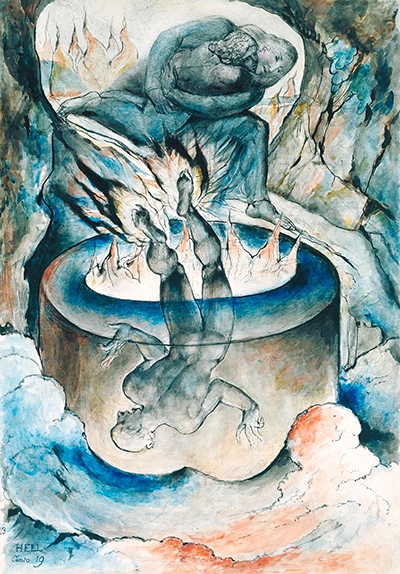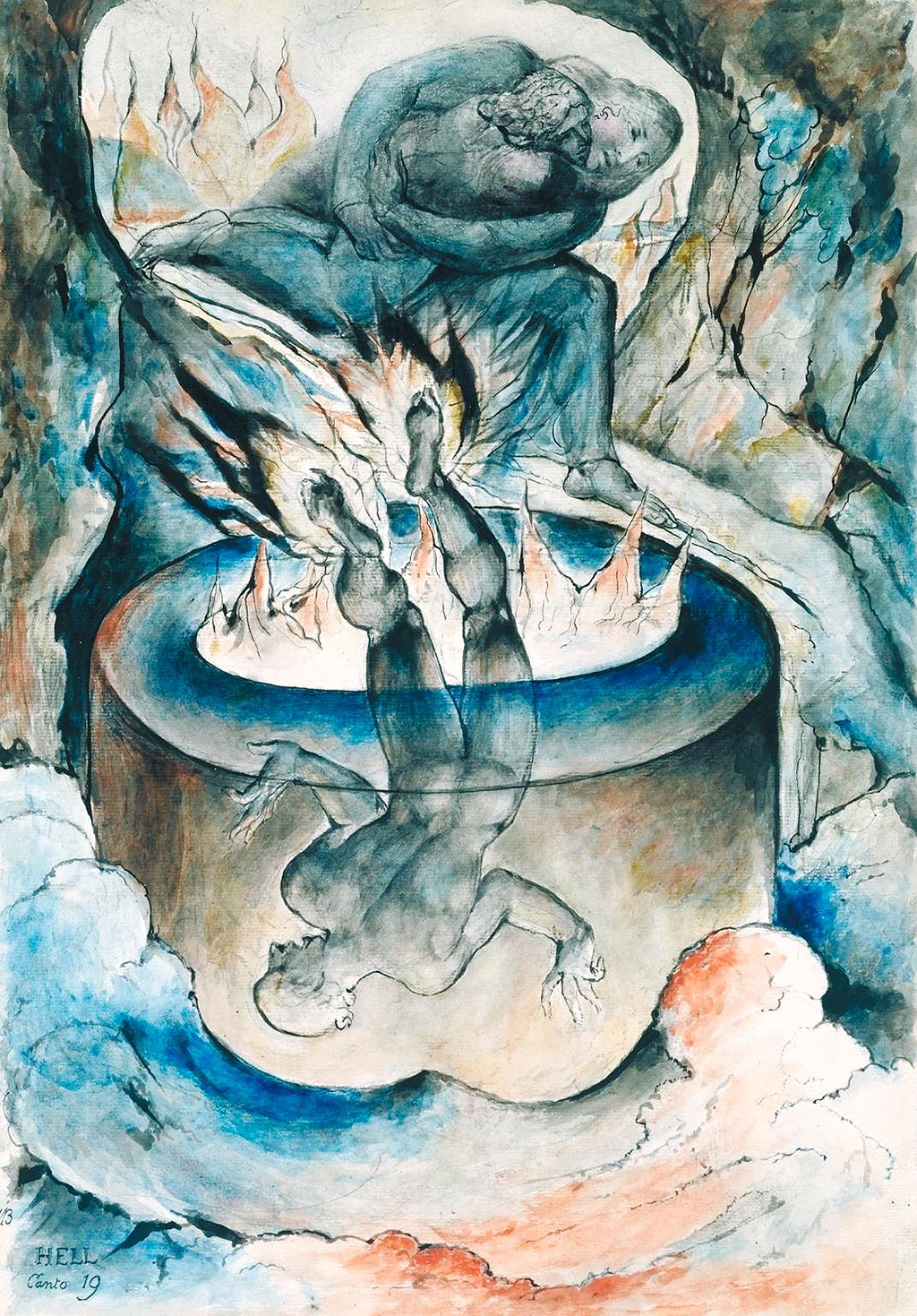This beautiful illustration was one of many produced by William Blake for Dante's Divine Comedy. He made use of ink and watercolour for this representation of a passage from the famous literature which has inspired many artists over the centuries.
The Simoniac Pope specifically refers to Inferno XIX, 31–126. Simony refers to the "buying or selling of ecclesiastical privileges, for example pardons or benefices". The figure hanging upside down has received the punishment of being suspended in that position within a well of fire for the crimes of simony and will remain there, according to tradition, until another commits a similar act and can then replace them. The setting is a cave which feels appropriate for a spiritual atmosphere, with caves used regularly in religious scripture as a means of seclusion, sometimes punishment. The overall theme of this painting is a moral one, where those who turn their back on spirituality after having their heads turned by materialistic desires will ultimately suffer the consequences, sooner rather than later. Dante Alighieri's poem Divine Comedy was completed in the 14th century, and several other artists would also use it as inspiration for their work, producing visual representations of their favorite parts of the text, with Botticelli's being the most famous of all.
William Blake uses a bright palette for this watercolour, and the result is impressive. We find tones of orange and blue in the wavy scene around the foot of the well. The Pope who is submerged in the flames has his back to us, increasing the feeling of helplessness, but also allowing the artist to display more of his impressive handling of anatomy, with a sculptured, muscular back which might remind some of the drawings of Michelangelo. The well itself is left opaque in order to show the full length of this Pope, to allow us to experience the pain and desperation that he surely would have been feeling at the time. Flames then fire up from the surface, as well as from the figure's own feet. Behind him is Virgil and Dante who are attempting to avoid the same punishment themselves. Comparisons between this artwork and a number of William Blake drawings have uncovered some similarities, which suggests that there would have been some elements of study and practice prior to working on this final piece.
Pope Nicholas III serves here a moral reminder of the need to take the right path in life. It was produced by Blake in 1794 as part of a stunning book which promoted the original texts alongside the most extraordinary late 18th century art. Book illustration was an important part of this artist's career, but in truth he was amongst the most versatile of artists in British history, gifting us poetry and drawings alongside impressive watercolours such as this. He is today still regarded as one of the Greatest Britons, and when you consider his legacy, it really is hard to argue with that. Recent exhibitions have attempted to remind us of the diversity of his career and the abilities that he had to impress and innovate across a number of quite different disciplines. His other illustrations for Dante's Divine Comedy are also featured and discussed elsewhere and continue his technical work with bright colour tones.





